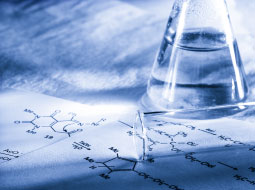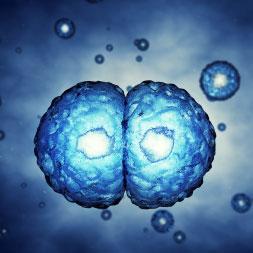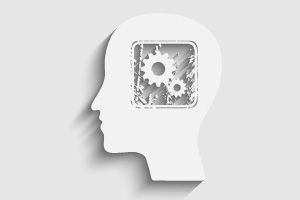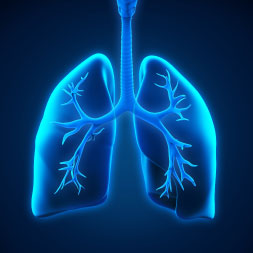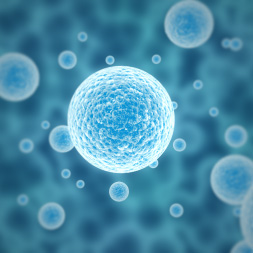Online courses directory (190)
Gases behave differently from either solids or liquids, so there are different methods for understanding their behaviour. Having neither fixed volume nor shape gases are moulded entirely by the container in which they are held and from this it is possible to measure their behaviour by measuring properties such as pressure, volume, temperature and number of molecules. This free online chemistry course will introduce the concept of the ideal gas and the ideal gas law which is a good indicator of the behaviour of gases under many different conditions. The various components in the ideal gas law are explained in clear terms and you will see that by using equations you will understand how the impact of a change to one property, for example temperature, will impact on the other properties. Where there are multiple gases in a container you will be shown how to work out their partial pressure relative to the total pressure. This free online chemistry course will be of great interest to all students who wish to pursue a career in any of the sciences such as chemistry, physics, biology or geology, and to the individual learner who simply wants to learn and understand how gases behave.<br />
Heredity is the genetic transmission of characteristics from parent to offspring. Many of these characteristics, particularly the dominant ones, have a physical manifestation like hair colour or colour blindness, but other traits can skip generations until the right combination of genes allows a regressive trait to appear. This free online course about heredity will look at how traits are passed on, why some traits form part of our physical makeup and why we only carry others in our genes but never express them. You will learn how to work out ratios of traits that are present in both the genotype and phenotype using the Punnett Square method and the Hardy-Weinberg Principle. You will also learn how bacteria change their DNA over time and how this impacts on human health. Similarly you will learn how viruses replicate and how they can change human DNA. This free online heredity course will be of great interest to all learners who wish to pursue a career in sciences such as biology, medicine, zoology or botany and to any individual who simply wants to learn more about how traits are inherited and changed.<br />
This free online course offers an in-depth exploration of general, organic and analytic chemistry. It examines various topics such as chemical equilibrium, rates of reaction, chromatography and their applications in real-world industries. These tutorials are are an excellent complement to chemistry classes for students or for those working in the chemical industry who would like to refresh their knowledge of these topics.
Cell division and replication are fundamental biological processes that occur in all organisms. This free online course about cell division will explain the complex processes of cell division in detail. You will learn about mitosis and meiosis and the phases that occur in each of these processes. You will learn that in the early stages of development embryonic cells can generate all cell types in the body. You will also look at how cells divide and replicate allowing us grow and repair body tissues, and if damage occurs, how some cells can replicate faster than surrounding cells to form tumours. This free course will be of great interest to all students who wish to pursue a career in the sciences, medicine, pharmacy, nursing, biology or biodiversity or the individual learner who simply wants to learn more about mitosis, meiosis and their role in cell division and replication.<br />
Two fundamental aspects of chemistry are, firstly, the structure of the atom and the role of the subatomic particles neutrons, protons and electrons, and, secondly, the atomic structure of the known elements that make up everything and how their place in the Periodic table of the elements determines their chemical properties. This free online course will give learners a comprehensive knowledge and understanding of these two core building blocks within chemistry. The course starts by examining the structure of the atom and subatomic particles, and then discusses the elements, and breaks them down into their subatomic structure of protons, neutrons and electrons. You will learn how the structure of each element determines its place in the Periodic table and its chemical properties. This course will be of great interest to all students who wish to pursue a career in any of the sciences such as chemistry, physics, biology or geology, or the individual learner who simply wants to learn and understand what the world around us is made up of.<br />
This course provides an introduction to the chemistry of biological, inorganic, and organic molecules. The emphasis is o
This free online learning course introduces the learner to the basic principles of Psychology from both a behavioural and biological perspective. The topics include classical and operant conditioning, the brain and the nervous system, stress and states of consciousness. All ALISON graduates are entitled to certification. This free Psychology course is an excellent complement to face-to-face classes and as a study guide or for those who would like to familiarise themselves with the fundamentals of Psychology.<br />
The amount of energy required to change the state of a substance depends on how strong or weak the bonds between the molecules are. For substances with strong bonds at standard temperature and pressure, like diamonds, it is extremely difficult to separate the molecules, whereas substances with weak bonds, like helium, remain in a gaseous form and do not condense into liquid or solid states. In this free online chemistry course you learn more about factors that affect the chemical nature of substances. You will learn why substances changing state can also be affected by mixing substances together. The course explains about using water as a solvent and mixing in different substances to see the effect on the boiling and melting points of the solution. This is followed by step by step examples of working out what the change in boiling or melting point will be based on the amount of solute added. This free online chemistry course will be of great interest to all students who wish to pursue a career in any of the sciences such as chemistry, physics, biology or geology, or the individual learner who simply wants to learn more about factors that affect the chemical nature of substances.<br />
Fundamentals of Biology focuses on the basic principles of biochemistry, molecular biology, genetics, and recombinant DNA. These principles are necessary to understanding the basic mechanisms of life and anchor the biological knowledge that is required to understand many of the challenges in everyday life, from human health and disease to loss of biodiversity and environmental quality.
Course Format
 This course has been designed for independent study. It consists of four units, one for each topic. The units can be used individually or in combination. The materials for each unit include:
This course has been designed for independent study. It consists of four units, one for each topic. The units can be used individually or in combination. The materials for each unit include:
- Lecture Videos by MIT faculty.
- Learning activities, including Interactive Concept Quizzes, designed to reinforce main concepts from lectures.
- Problem Sets you do on your own and check your answers against the Solutions when you're done.
- Problem Solving Video help sessions taught by experienced MIT Teaching Assistants.
- Lists of important Terms and Definitions.
- Suggested Topics and Links for further study.
- Exams with Solution Keys.
Content Development
Eric Lander
Robert Weinberg
Tyler Jacks
Hazel Sive
Graham Walker
Sallie Chisholm
Dr. Michelle Mischke
Other Versions
Other OCW Versions
OCW has published multiple versions of this subject. ![]()




